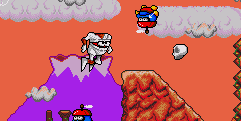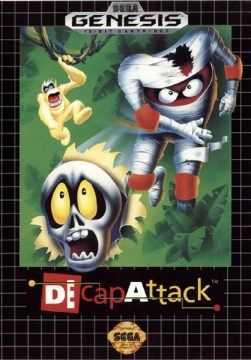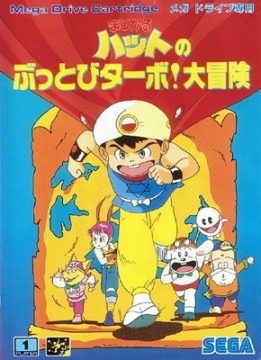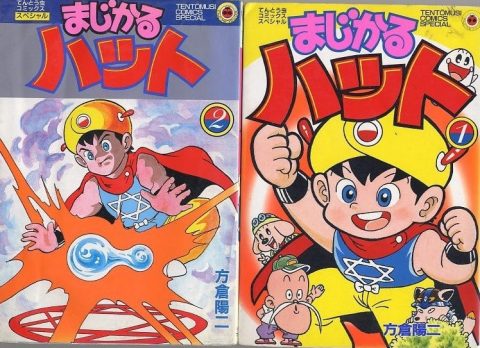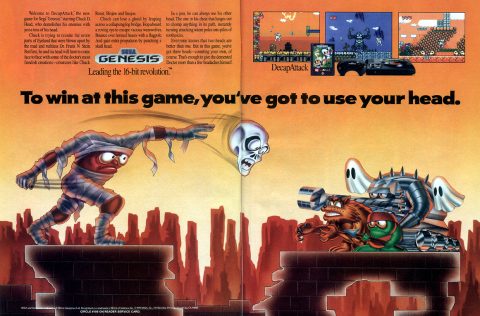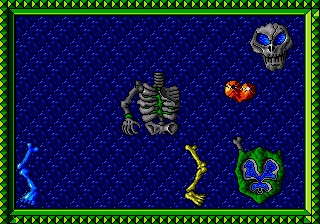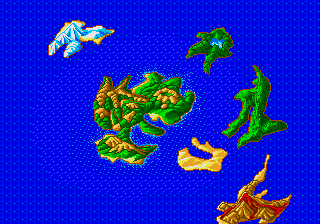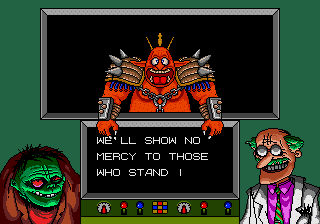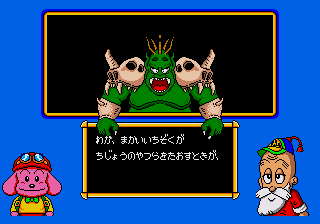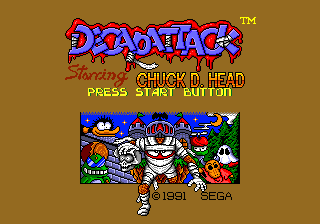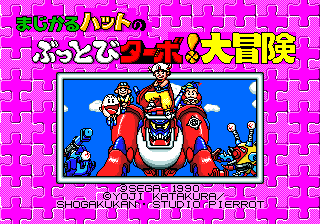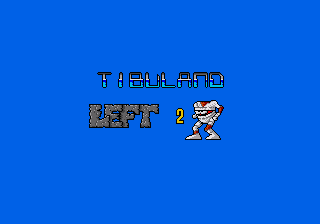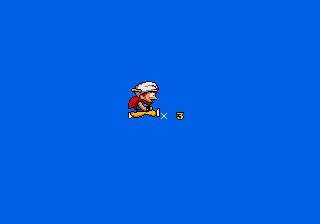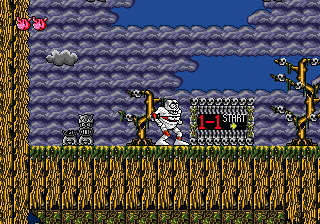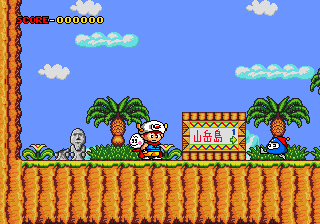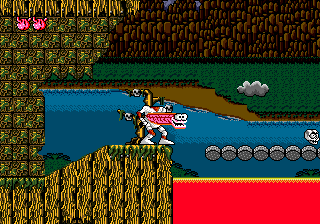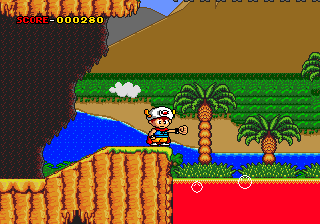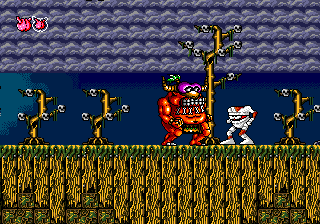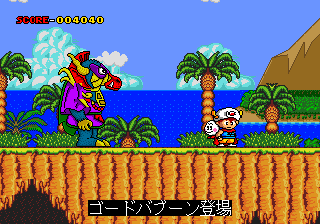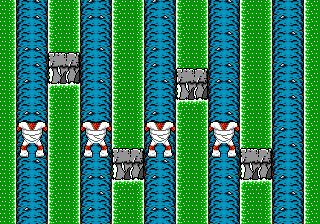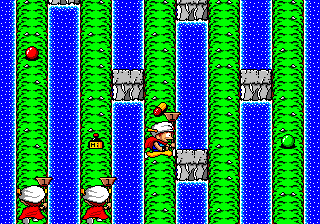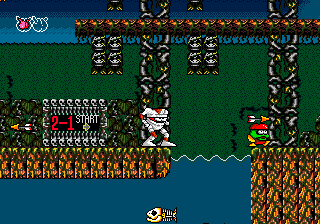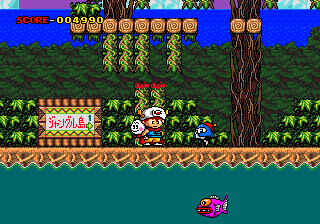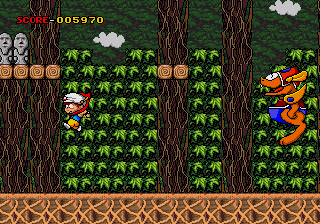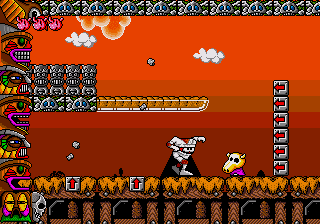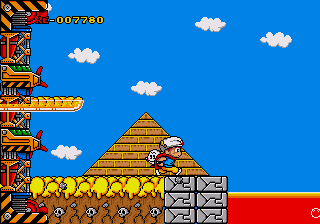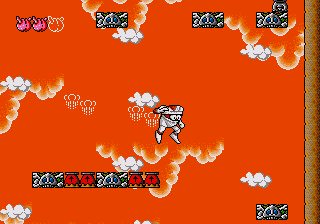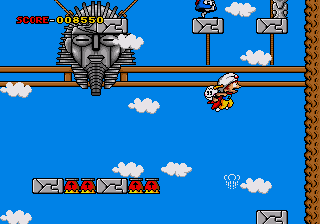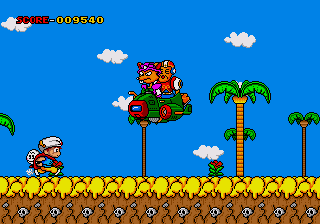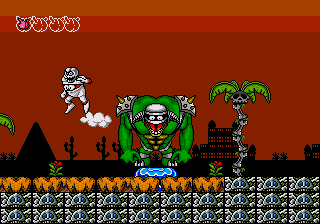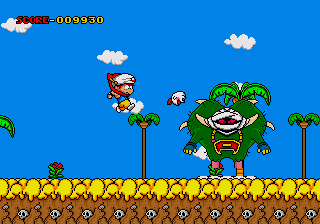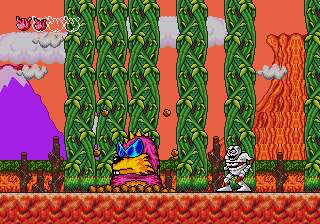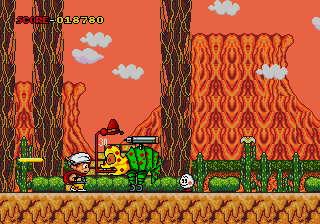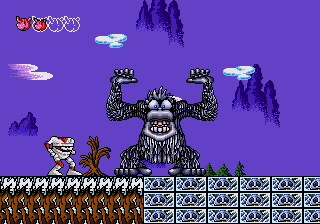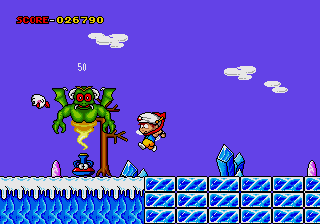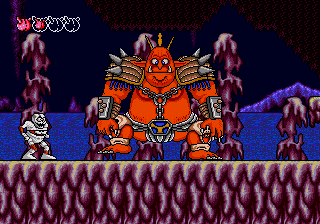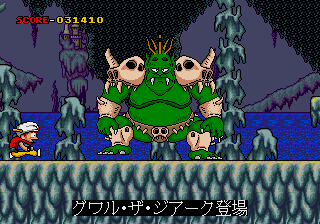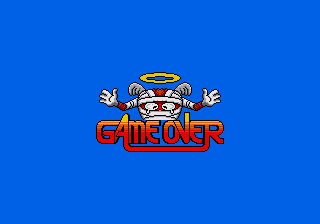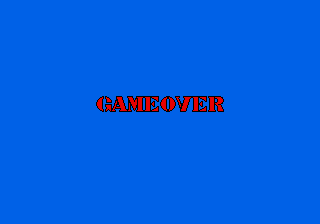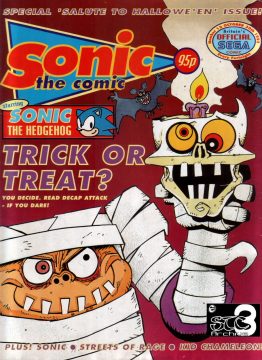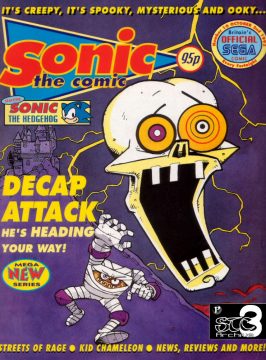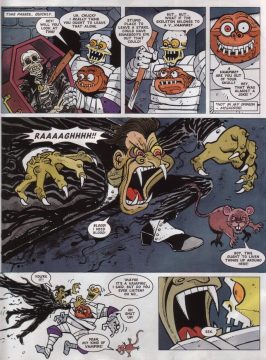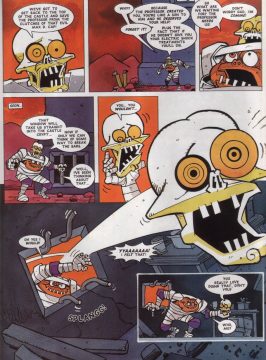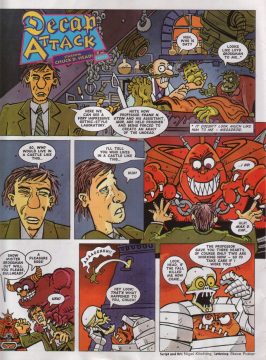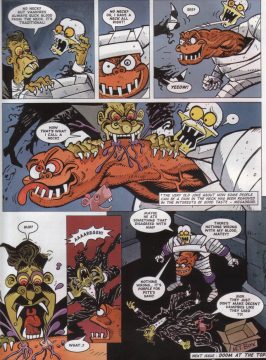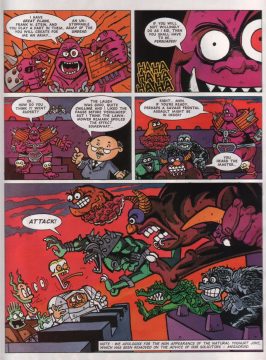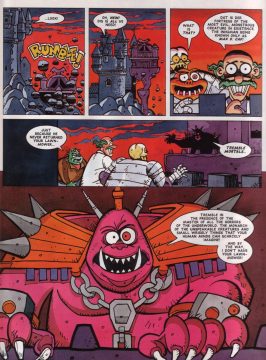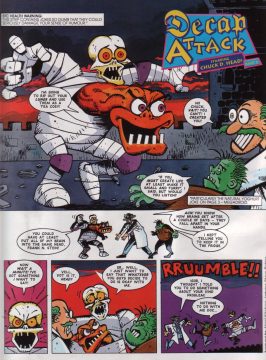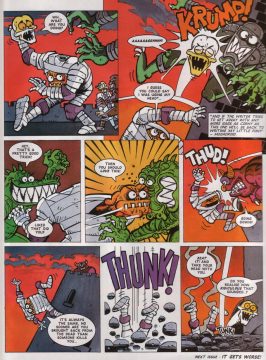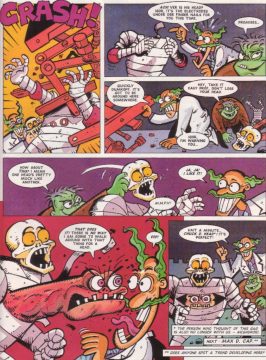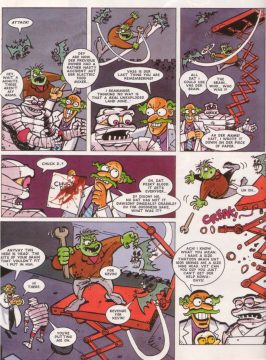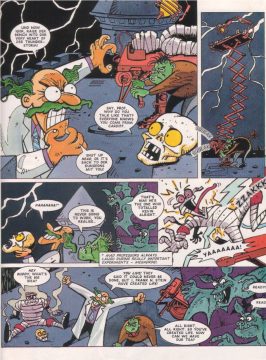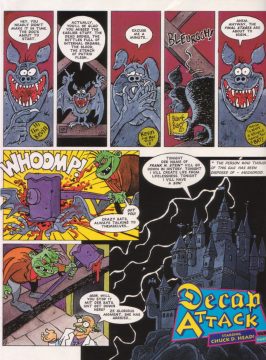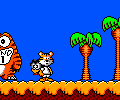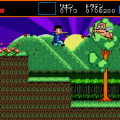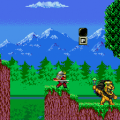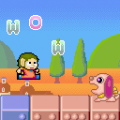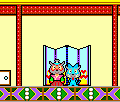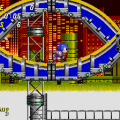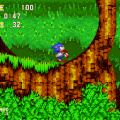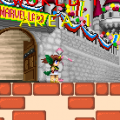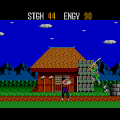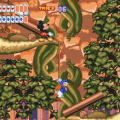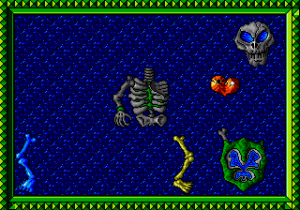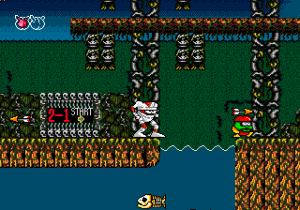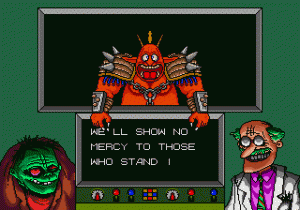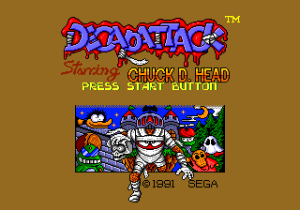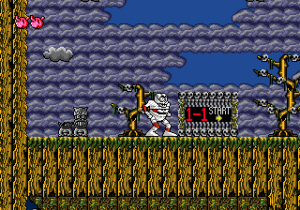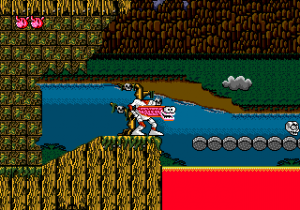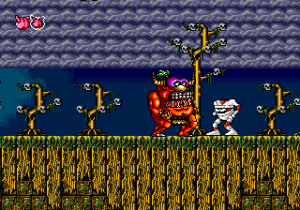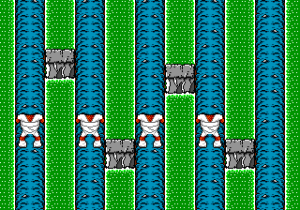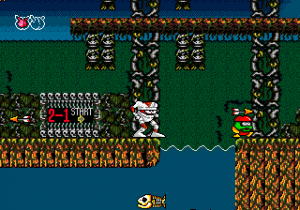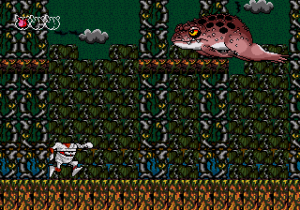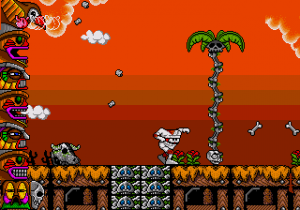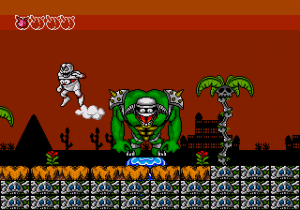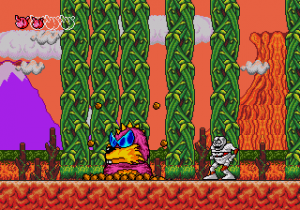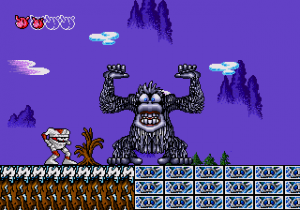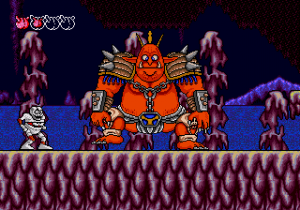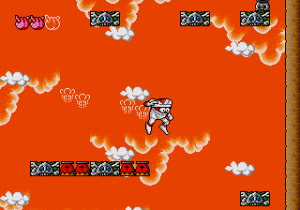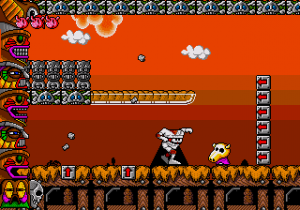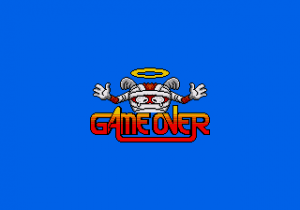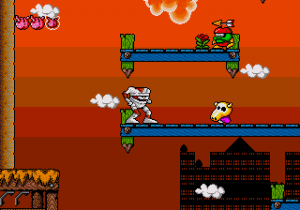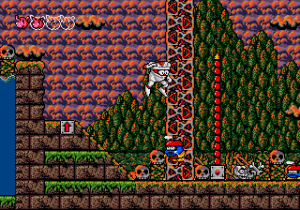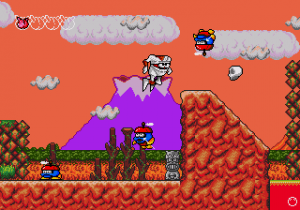- Kid Kool
- Psycho Fox
- DecapAttack / Magical Hat no Buttobi Turbo! Daibouken
The basic concepts behind Kid Kool and Psycho Fox were carried forward into the 16-bit era, in what became two different titles, depending on the territory. In Japan, it’s known as Magical Hat no Buttobi Tabo! Daibouken (or just “Magical Hat Adventure” for short), based on the anime Magical Hat by Studio Pierrot, which takes place in a goofy variation on Arabian Nights. Here you play as the turban-clad hat as he saves the world from the evil demon Jiark. Considering that the show was not available outside of Japan, the game was totally reworked into DecapAttack, changing its brightly colored Arabian theme to a spooky, Halloween-type horror world. In this game you take on the role of Chuck D. Head, a mummy-like creature with its head built into its chest, the creation of the crazy doctor Frank N. Stein. It’s not exactly a case of the stereotype of Western games being “darker”, because in spite the change it’s still quite cartoony.
The mechanics have been improved substantially over the 8-bit titles. The physics have been improved so you don’t have to get a running start to get any distance when jumping, although the controls are still slippery. You can now travel backwards and forwards, and many levels are almost entirely vertically oriented. In general, the stages are more open, similar to Sonic the Hedgehog, where there are many different routes to take through a level, complete with out-of-the-way alcoves. The poles are still here, though they still don’t do much, as well as the gusting wind and bouncing blocks. (Strangely, most of them are labeled with question marks in Magical Hat, while they all have arrows in DecapAttack.)
You can still pick up a “helper” item that’s tossed a short distance and then returns after a few seconds. (In Magical Hat this is an egg named Robogg; in DecapAttack, it’s a skull.) Also returning are the strange bounding flagpoles, though they don’t serve much use beyond granting extra lives in Magical Hat and restoring health in DecapAttack. The eggs of Psycho Fox are now statues, and the number of power-ups and potions have been greatly expanded. You can enter a subscreen and use these at any time, including the ability to wipe the screen from enemies, a more powerful main attack, and various other useful attacks. Also useful is the ability to float down in mid-air by repeatedly pressing the jump button.
Beyond the complete graphical overhaul and entirely different soundtracks, the core games are roughly 80% identical. Many of the levels are very similar, but have been changed around substantially in some cases – for example, many lava pits have collapsing bridges over them in DecapAttack. The difficulty balancing is largely where the games diverge. In Magical Hat, you can only take a single hit before dying. (Like Kid Kool and Psycho Fox, if you have egg/skull, you can absorb a single hit, although you lose the weapon.) In DecapAttack, you have a life meter – three hearts to start with (though you can downgrade to one in the option menu if you’d like), with each heart taking two hits worth of damage. Certain power-ups can extend this even longer. Magical Hat also gives you many more extra lives. You can choose nine to start with, and many bonus ones can be found in the statues throughout the levels. In DecapAttack, most extra lives can only be obtained in the bonus levels. It also never restores health after any stage.
This might seem like it would make Magical Hat much harder, and in some ways it is, but the stages in DecapAttackare designed to be much more difficult to compensate for the extra damage you can absorb. Enemies are more numerous, and bosses have more difficult attack patterns. Nevertheless, Magical Hat has a few annoying quirks that work against it – namely, the hit detection when jumping on enemies is a bit spotty, resulting in more deaths than necessary, whereas the same thing in DecapAttack is usually just a minor annoyance. Some statues also contain enemies – in Magical Hat they fly out immediately, but they flicker for a second place in DecapAttack, making it easier to kill them beforehand. Also worth noting are the items you have to find in the third stage of every world. These are always hidden, so it requires some exploring. In Magical Hat, they’re conveniently located by the exit in the first couple stages. In DecapAttack they’re located in different places.
Comparison Screenshots
In Magical Hat, the continent is broken up into several islands, and Hat must defeat the bosses to reunite them. In Decap Attack, the concept is similar, but the world is shaped like a giant skeleton called Eyeland. The body-part puns in this game are tragic – the levels include Abdomainland, El Beau Island, Tibuland, Armington, Pumpington and Last Leg Land. In between worlds, you are treated with cutscenes of the world reassembling itself.
Both intro scenes are similar, with two characters at the bottom discussing the events (Hottoken the dog and Tai-jiisan the old man in Magical Hat, and the mad Dr. Frank N. Stein and Igor-esque dude in DecapAttack), while the main boss (who looks similar in both games) comes on to the main screen to taunt them. In Magical Hat the bad guy is named Jiark, but is known as Max D. Cap.
Here are the title screens for each.
The pre-level screen in Magical Hat only shows an animation of Hat running, with the number of lives remaining. In DecapAttack, it displays the name of the world, each given some punny name in regards to a body part (El Beau Island, etc.) as Chuck runs over, punches, and shows the lives left.
This is the beginning of each stage. Notice how in DecapAttack it uses the same “Level 1-1” nomenclature as Kid Kool and Psycho Fox. In Magical Hat it instead names the level in Japanese. Here you can see that many of the foreground tiles are similar, but the backgrounds are entirely redrawn in DecapAttack, and are generally much darker. The totems in Magical Hat are moai statues, while they look like voodoo totems in DecapAttack. The rest of the enemies are totally different, although they mostly act the same. There are extra graphical flourishes in DecapAttack, though, like the bones that are tossed up from the ground when you kill a bad guy. In some instances you can spot the influence of Magical Hat (like the pyramids in the backgrounds of certain levels), though there are few cases where background details were completely removed in DecapAttack.
Like Psycho Fox, you have a short range attack. In DecapAttack, the skull within Chuck’s stomach will pop out of the bandages, while in Magical Hat you’ll punch.
This is the first level boss. In DecapAttack it’s some sort of vaguely African inspired monster, while it’s a giant baboon in Magical Hat. Note that all of the bosses have names in Magical Hat, which display right before you fight them.
Both games have the amidakuji-style bonus games as Psycho Fox. However, right before you reach the goals, you can stop the roulette, which will further change the paths.
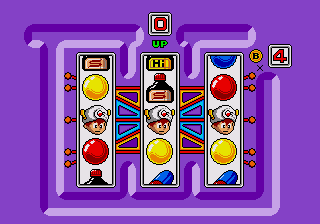
This slot-type bonus level is only in Magical Hat.
Most of the levels are very similar, but are tweaked in various ways. For example, in DecapAttack you can immediately hop into this body of water at the beginning of stage 2-1. In Magical Hat you need to go right, jump into the pond, and wrap back around.
The second stage boss is a frog in DecapAttack, while it’s a kangraoo in Magical Hat. The boss patterns are generally much easier in Magical Hat, to compensate for the fact that you can only take a single hit.
Stage 3-1 is autoscrolling, as you’re chased by a totem pole (in DecapAttack) and some kind of grinding machine thing (in Magical Hat). Here’s another case where DecapAttack is more difficult – right near the end of the stage is this series of arrow bouncing blocks, which you need to scale before you can go forward. These are entirely absent in Magical Hat, where you just jump over a pit of lava.
Magical Hat has this cool Egyptian-like statue in the background of most of the third world.
DecapAttack unfortunately doesn’t such an equivalent, making these levels look barren.
Magical Hat also has an extra sub-boss battle against these guys, Kowaru and Dogoo, from the anime. They were simply taken out of DecapAttack.
The main third boss battle is largely the same, however.
The fifth level boss is a mole in DecapAttack, and a lizard in Magical Hat. By the fifth level, there’s not nearly as much of a variation on the color scheme as the previous areas. Note that the mole looks a lot like the one from Calorie-kun vs. Moguranian, a mid-80s Vic Tokai arcade game distributed by Sega.
The sixth stage is the standard snow level. The boss is really cool in DecapAttack, which is a yeti that shows off some impressive sprite manipulation. He’s just an evil genie in Magical Hat.
Like the intro indicates, the final boss is mostly the same outside of the color and face animations.
The Game Over screen in DecapAttack is colorful, although isn’t Chuck already dead? Isn’t giving him a halo sort of redundant?
The kneejerk reaction of many gamers is that the original Japanese version is usually superior than whatever altered version the overseas audience gets, but that’s not always true. In this particular case, DecapAttack is a bit better overall, just because the extra life meter allows not only for lesser cheap deaths, but more involving action and boss battles. The real clincher in the game’s soundtrack though, which are completely different. Magical Hat‘s soundtrack, to put it bluntly, is a bit crap, while DecapAttack‘s is magnificent. The composer of DecapAttack is believed to be Fumito Tamayama, who also did Battlemania Daiginjou and was obviously very adept about making the Genesis sound chip sound absolutely masterful. The only downfall is that there are only a few themes repeated several times throughout the game.
Due to its license, Magical Hat has never been re-released beyond its Mega Drive incarnation. However, DecapAttack appears on the Sega Genesis Collection for the PlayStation 2 and PSP, and Sonic’s Ultimate Genesis Collection for the PlayStation 3 and Xbox 360, as well as a PC download through digital distribution services like Steam and Amazon.
DecapAttack was also featured in the Fleetway Sonic the Comic series in the United Kingdom. Written and drawn by Nigel Kitching (along with Richard Piers Rayner and Mike McMahon), it moves away from Japanese manga style in favor of more typical Western comic books. Whereas Chuck’s head stays buried in his body through most of the game, here it’s a monstrous being which is always sticking out from beneath the bandages. His skull is a separate entity named Head, who tends to get annoyed whenever he’s thrown at things. Frank N. Stein and Igor also play prominent roles in the series. It’s quite absurdist and goofy.
Comic Gallery
